What Paint to Use on Shoes for Stunning Customization
If you're thinking about giving your old shoes a fresh look or putting your personal spin on a new pair, picking the right paint is key to making it all come together. The type of paint you choose will seriously affect how your shoes hold up, the final look, and whether it all comes out the way you imagined.
Now, if you're rocking a pair of Vessi shoes, you might want to think twice before grabbing that paintbrush. These waterproof wonders are already pretty perfect as they are!
But don’t stress if you’ve got other shoes in mind! This article will walk you through the best paint options for leather, canvas, fabric, and vinyl shoes, plus some handy tips on keeping those painted kicks looking fresh.
Why Do People Paint Their Shoes?
More and more people are getting into painting their shoes, whether it’s to create something cool, make their kicks stand out, or just because it’s the latest trend. But it’s not just about following the crowd—painting shoes gives people the chance to turn beat-up or plain shoes into something really special.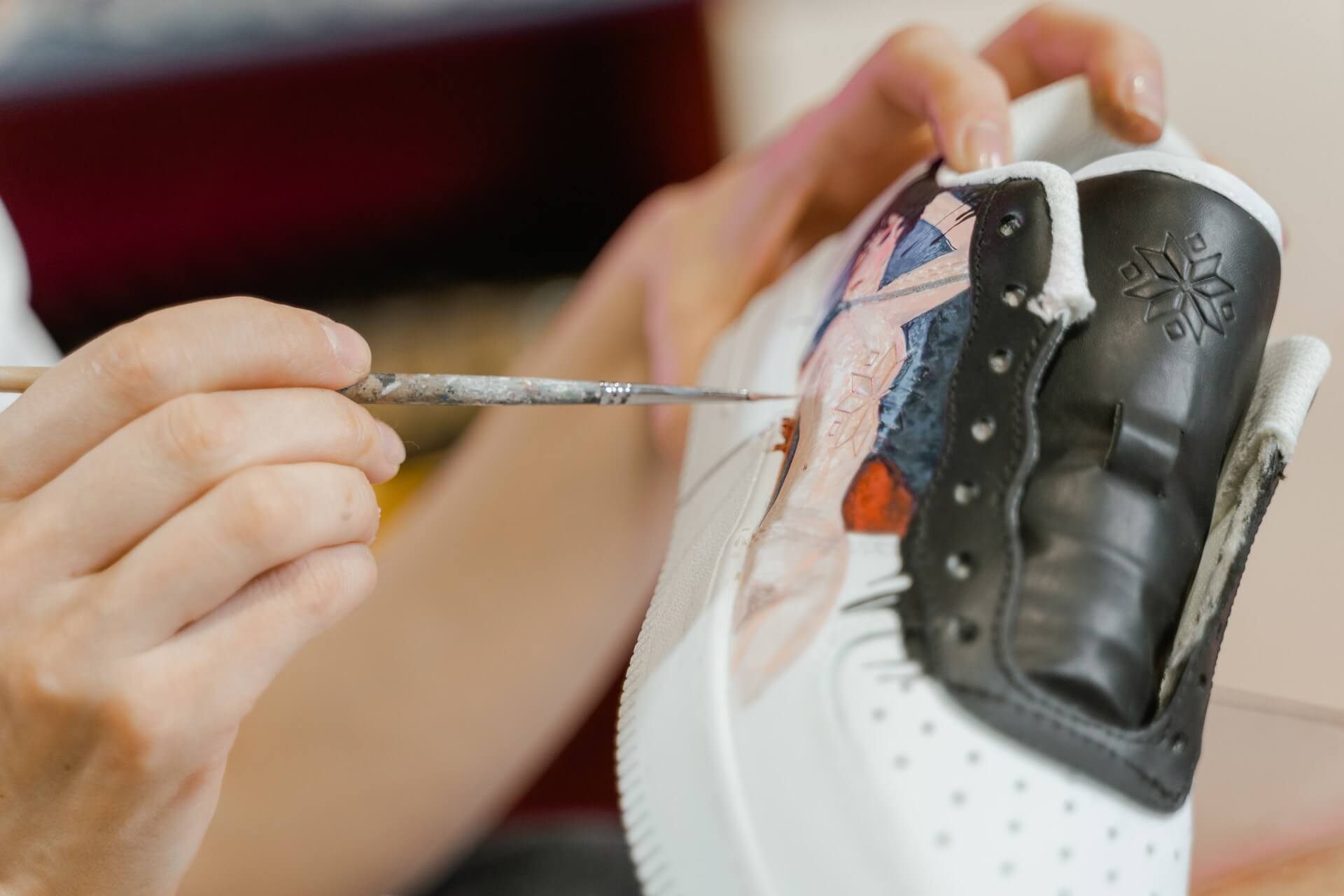
Image Source: novacolorpaint.com
Moreover, it’s a fantastic way to breathe new life into old shoes you no longer wear. By redesigning and personalizing them, you can take something that has been forgotten and turn it into a unique piece that is totally yours. In the end, painting shoes isn’t just about standing out; it’s about embracing what makes you different and adding that extra something to your outfit that says, "This is me."
What Paint Can You Use on Shoes?
1. Acrylic paint: the versatile choice
Acrylic paint is usually the best bet for painting your shoes. It's easy to find, flexible, and works across a variety of materials. These water-based paints dry quickly and come in plenty of vibrant shades, making them perfect for leather, vinyl, fabric, and canvas shoes.
Image Source: painttopics.com
If you’re going with acrylic, make sure your shoes are clean first. For leather or vinyl, applying a primer is key to help the paint adhere properly. You can use a paintbrush or a paint pen, depending on whether you're going for delicate details or bold strokes. And don’t forget to seal your work—an acrylic sealer spray will help it last, or you can add a fabric medium if you’re working with fabric or canvas to keep everything looking fresh.
Pros
-
Acrylic paint is adaptable and may suit a variety of materials, such as canvas, cloth, leather, or vinyl shoes
-
Wide color range
-
Quick drying
-
Easy clean-up
-
Long-lasting
Cons
-
Prone to cracking
-
Requires sealing
2. Spray paint: quick and even coverage
Spray paint is a quick and easy option, especially if you want to cover your shoes evenly. It’s particularly great for canvas shoes and sneakers. Just be sure to protect other areas of the shoes with masking tape or plastic wrap to avoid accidental splashes.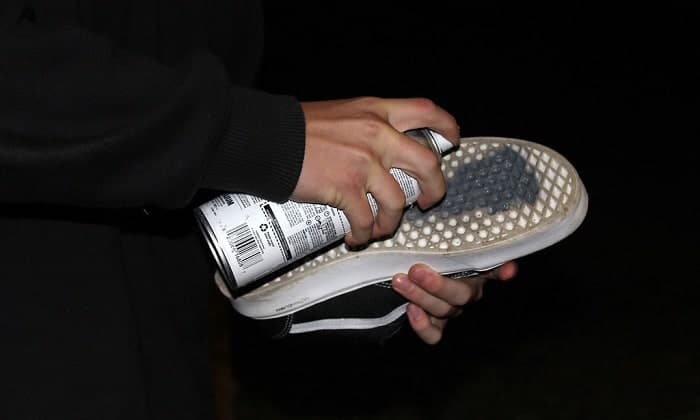
Image Source: artltdmag.com
Start with a light coat of spray paint and let each layer dry before adding more. This helps you build up a smooth, even finish. While spray paint is faster and simpler than using a brush, it’s not ideal for detailed designs. It’s best for getting a solid, uniform color or creating a base layer, after which you can add more intricate details with other types of paint.
Pros
-
Quick and even coverage
-
It can achieve a smooth, professional-looking shoe finish.
-
Wide color range
-
Suitable for various surfaces
-
Can create unique effects
Cons
-
Strong odor and fumes
-
Difficult to correct a mistake
-
Less suitable for certain materials
3. Leather paint: ideal for leather shoes
If you're working with leather shoes, leather paint is definitely the way to go. It sticks well, holds up to wear, and moves with the leather without cracking. Brands like Angelus have a ton of colors and finishes to choose from.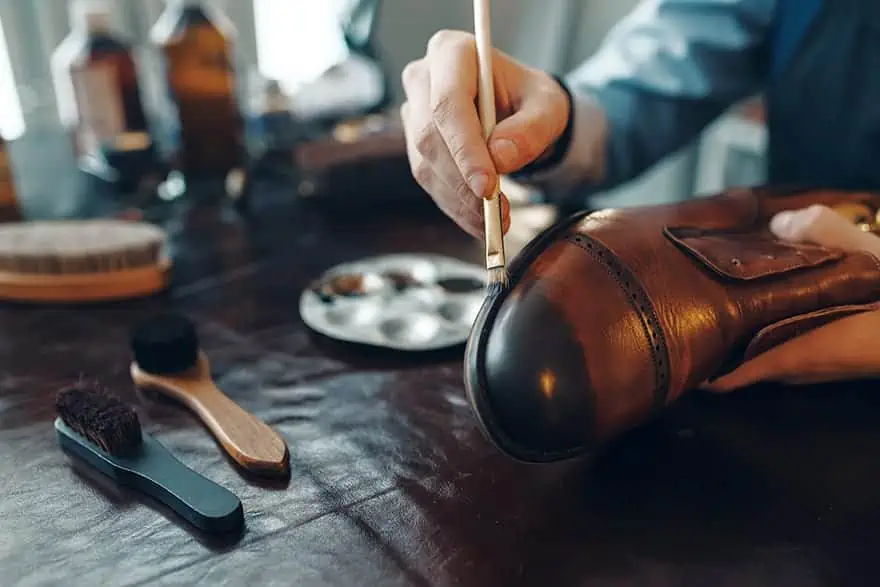
Image Source: acrylgiessen.com
Before painting, clean the shoes and make sure to remove any old finishes using rubbing alcohol or nail polish remover. Then, apply thin layers of paint with a brush, letting each coat dry before adding the next. Once you're happy with the result, finish it off by sealing it with an acrylic sealer or a leather finisher to protect your work and help it last longer.
Pros
-
Specifically designed for leather
-
Flexibility
-
Wide color range and finishes
-
Can cover imperfections
-
Long-lasting
Cons
-
Limited application since it is ideal for painting leather shoes
-
It is more time-consuming than other paint types
4. Fabric paint: perfect for canvas and cloth shoes
Fabric paints are made specifically to bond with fabric and canvas, so they’re perfect for painting canvas shoes or even waterproof sneakers. They’re super flexible and tough, so your color won’t fade even after a wash or a few coats. You’ll find fabric paints in all sorts of forms—bottles, markers, or pens—so you can really get into the details if that’s your thing.
Image Source: glytterati.com
Before you start, give your shoes a good cleaning to get rid of any dirt. Then, depending on your design, use a brush, markers, or pens to apply the paint. If you want the paint to be more resistant to water or wear, mix it with a medium. Once you’re done painting and the shoes are dry, use a hairdryer or an iron to set the paint and lock it in place.
Pros
-
Adheres well to fabric
-
Flexible and washable
-
Wide color range and finishes
-
Precise application
-
Customizable and creative
Cons
-
Limited adhesion to non-fabric surfaces
-
Requires heat setting or sealing
-
Slightly stiffer texture
-
Drying time and curing process
5. Paint markers: precision and detailing
Paint markers are perfect for adding fine details and precision, especially when it comes to shoe design. With their fine tips and steady control over the flow, they give artists plenty of flexibility to work their magic.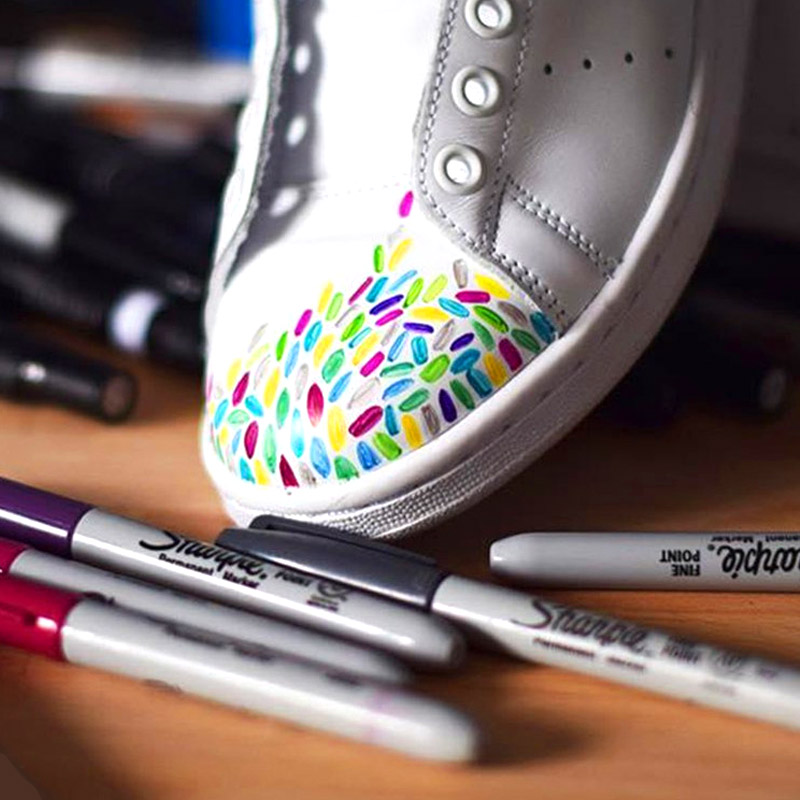
Image Source: penstore.com
They work on canvas, leather, and vinyl shoes, and once the paint is dry, it stays put—bright and permanent. Whether you're just adding a few small touches or going all out with a detailed design, paint markers make the process simple and effective.
Just shake them up before you start, and make sure your shoes are clean and ready to go. Apply your first coat, let it dry, and then add another if needed. To finish, seal it with a clear coat for extra protection and to keep everything looking sharp.
Pros:
-
Paint markers provide fine and controlled lines, allowing for detailed and intricate designs.
-
Ease of use
-
The paint in markers dries rapidly, reducing smudging risks
-
Paint markers come in many vibrant colors, offering creative freedom
-
Suitable for various materials, including fabric, canvas, wood, metal, and plastic
Cons:
-
The ink may spread slightly on porous materials, affecting fine lines' crispness
6. Paint pens
Paint pens are super handy for customizing shoes, especially when you’re working on detailed designs. They come in different colors and tip sizes, so you can easily nail the precision you need.
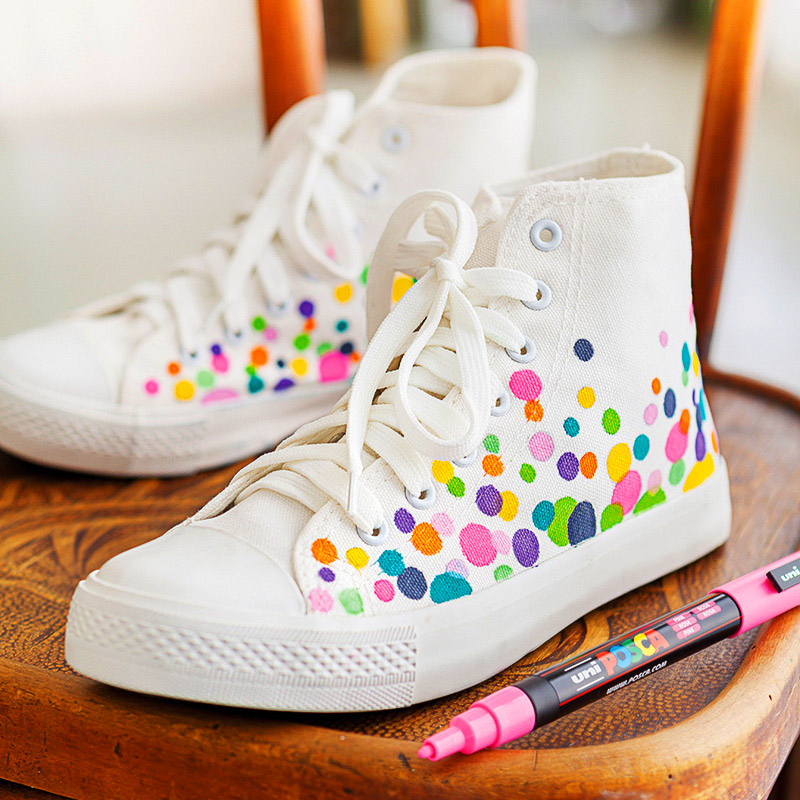
Image Source: penstore.com
Before you start, give the pens a good shake, then carefully draw your design on the shoes. Let the first layer dry completely before adding more coats or sealing the design with a clear coat to lock it in place.
Pros
-
Paint pens enable accurate control, making them perfect for intricate designs and fine lines on shoes.
-
Unlike traditional brushes, paint pens eliminate the need for palettes and water cups, reducing potential mess.
-
Quick drying
-
Easy use
-
They are compact and easy to carry, making them convenient for on-the-go use.
-
Wide color range
Cons
-
The amount of paint in a paint pen is limited
7. Nail polish
Nail polish might not be your first thought when it comes to painting shoes, but it’s actually perfect for adding those tiny details—think accents or fine lines. Just make sure the polish you choose works with your shoe material so it stays put.
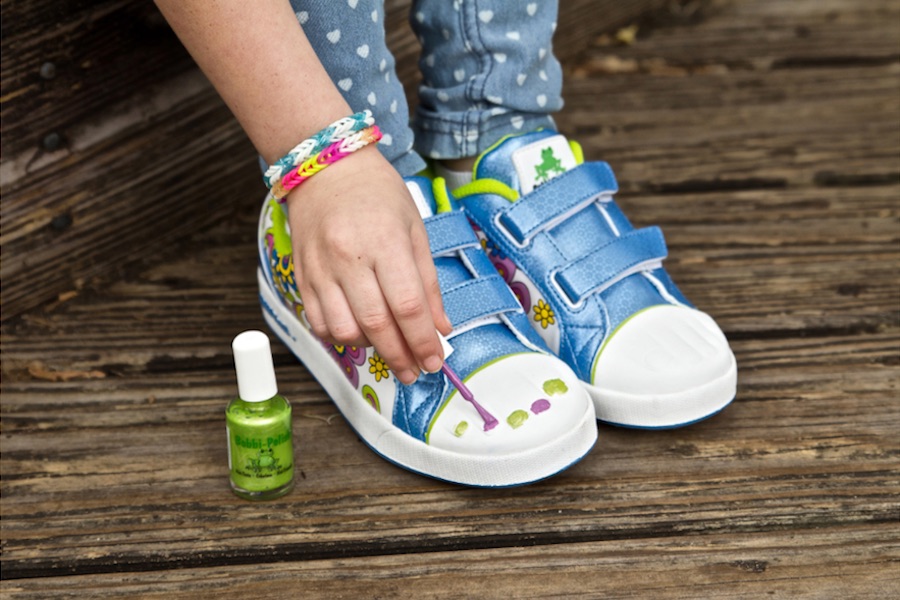
Image Source: coolmompicks.com
Use a fine brush or the polish brush to apply thin layers, letting each one dry before you add another. Once you’ve got your design down, seal it with a clear topcoat to keep it fresh and protected.
Pros
-
Wide color selection
-
Nail polish brushes are typically fine and precise, making them suitable for small detailing.
-
Quick drying
-
Nail polish is readily available, making it easy to find and purchase
-
It provides a glossy finish
-
Cost-effective
Cons
-
Potential cracking, chipping, or peeling over time
Tips for Maintaining and Caring for Painted Shoes

Image Source: ckamgmt.com
Taking care of your painted shoes is the key to keeping them looking great and lasting longer. Here’s how to give them the love they need:
-
Choose the right paint: Make sure you’re using the right paint for your shoe material. Leather, acrylic, or fabric paints are good choices, depending on what you’re working with. Matching the paint to your shoe type will help it stick better and last longer.
-
Allow sufficient drying time: Don’t rush the drying process. Give your shoes enough time to dry before wearing or touching them. Stick to the recommended drying times so the paint has time to set and fully cure.
-
Handle with care: Treat your painted shoes with care to avoid chips or scratches. Don’t rub, scrape, or drag them on rough surfaces—this will wear the paint down faster. Also, be careful when removing paint, incase you've made a mistake.
-
Clean gently: When it’s time to clean your shoes, use a soft cloth and mild soap. Avoid harsh chemicals, scrubbing too hard, or using abrasive materials, as these can damage the paint or mess with the color.
-
Avoid excessive moisture: Even if the paint is water-resistant, it’s best not to soak or dunk your shoes in water. Too much moisture can lift or peel the paint. If they get wet, just let them air dry.
-
Seal the paint: For extra protection, consider sealing the paint with a clear sealant or finisher. This will help protect your shoes from moisture, UV damage, and fading.
Final Take on What Paint to Use on Shoes

Image Source: i.ytimg.com
With the right paint and techniques, anyone can turn plain shoes into something special. As we’ve covered in this guide, different paints and methods work best for different shoe materials, and there are plenty of ways to care for your painted shoes, too.
Now that you’ve got all the tips and tricks, you’re ready to dive into the world of shoe painting. It's the perfect time to make your designs shine, your colors bold, and the details sharp, especially on your go-to pair.

